Estimated reading time 9 minutes, 45 seconds.
On Oct. 31, 1994, American Eagle Flight 4184 crashed into a field en route from Indianapolis, Ind., to Chicago, Ill., killing all 68 passengers and crew on board. According to the National Transportation Safety Board (NTSB), among the probable causes for the loss of control of the ATR 72 was “a sudden and unexpected aileron hinge moment reversal that occurred after a ridge of ice accreted beyond the deice boots.”
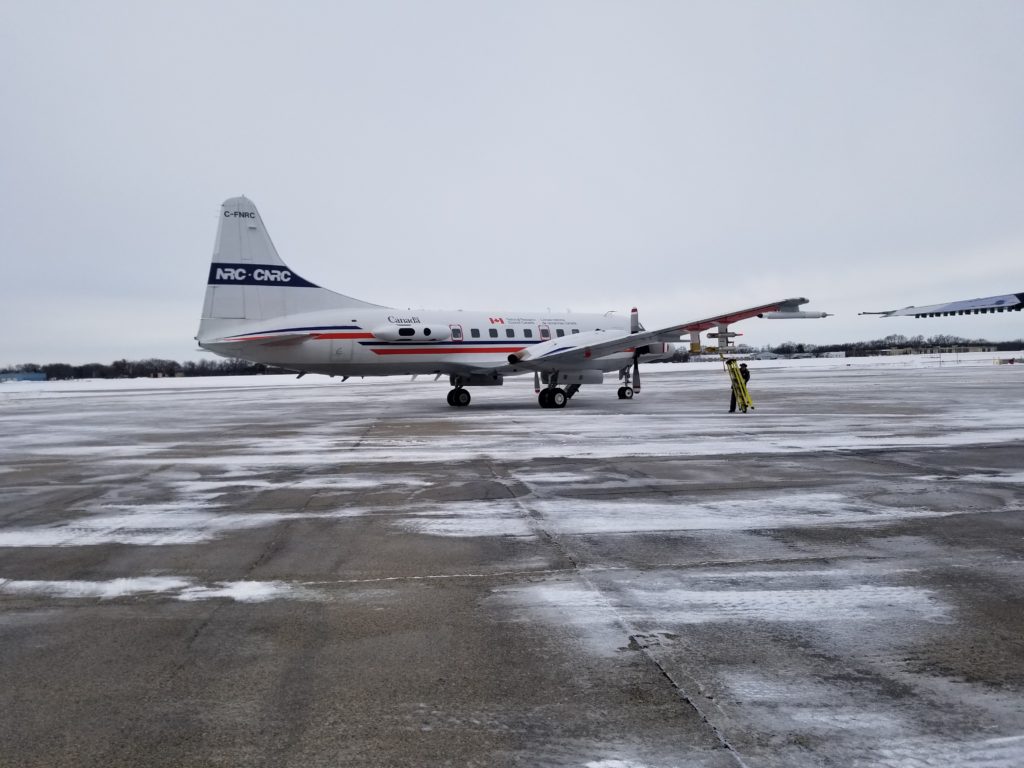
Among the contributing factors, the NTSB said, was a lack of information in operating flight manuals and flight crew training programs about “previously known effects of freezing precipitation on the stability and control characteristics, autopilot and related operational procedures” of the aircraft.
So too was the Federal Aviation Administration’s (FAA’s) failure to “ensure that aircraft icing certification requirements, operational requirements for flight into icing conditions, and FAA published aircraft icing information adequately accounted for the hazards that can result from flight in freezing rain and other icing conditions . . .”
If there was a positive outcome to the tragic accident, the crash triggered decades of research into better understanding the effects of ice buildup on aircraft, as well as new regulations and aircraft certification standards to reduce the likelihood of future disasters. Still, accidents caused by in-flight icing continue to be a reoccurring tragedy for aviation.
In early March, the National Research Council of Canada (NRC) completed a six-week project under the FAA’s Aviation Weather Research Program. The collaboration between the U.S. National Center for Atmospheric Research, Environment and Climate Change Canada, and other American and European agencies gathered data that could one day help lead to improved weather models and forecasting for all icing conditions.
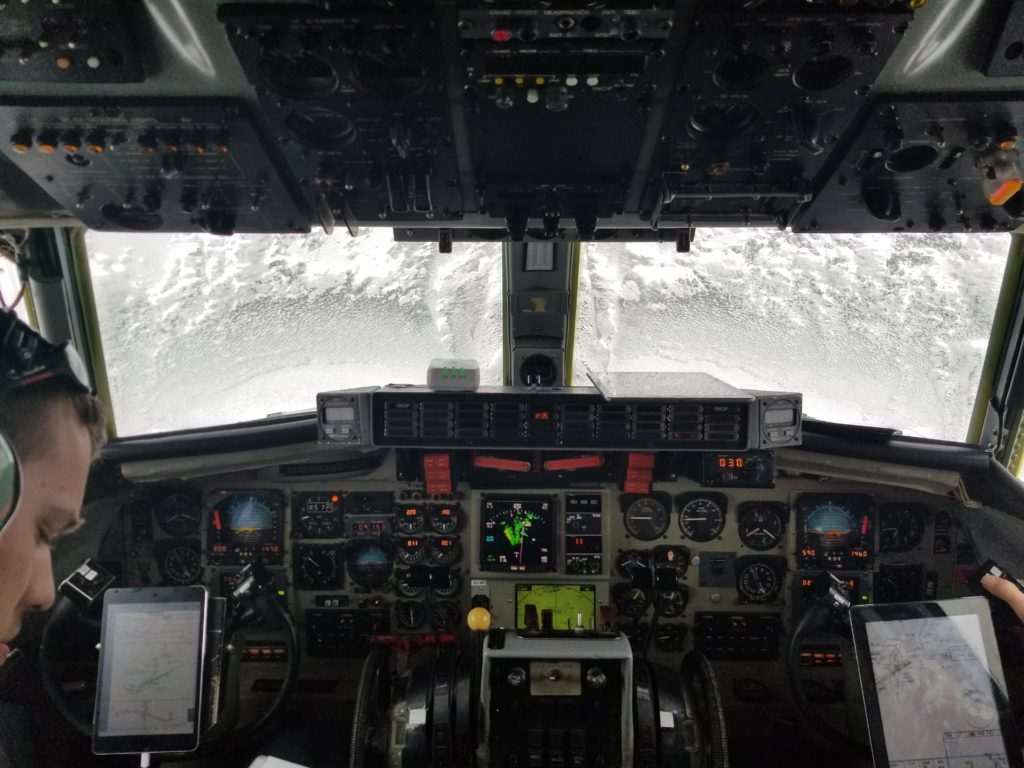
Known as ICICLE (In-Cloud ICing and Large-drop Experiment), the project involved over 100 hours of flying through various states of icing–extreme cold, large drops, freezing rain, freezing drizzle–to test whether onboard tools and sensors and ground-based radars could differentiate between different icing environments.
The data was collected using the NRC’s Convair 580, a twin-engine research aircraft equipped with over 30 sensors installed throughout the plane and through inlets designed to bring in air for sampling.
“It is quite extensive instrumentation in terms of cloud and aerosol sensing,” said Mengistu Wolde, a senior research officer with the NRC and the project lead. “We took measurements of cloud microphysics, from aerosol size (particles)–cloud condensation nuclei–to large centimetre-size precipitation particles.”
The crew of 11 researchers, including seven from the NRC, also took extensive measurements of atmospheric states to create three-dimensional profiles of temperature and humidity.
In addition to in situ sensing for data at the location of the aircraft, the Convair also had remote sensing systems. These included three different frequency radars to provide information on cloud structures above, below and to the sides of the aircraft–“It gives you a three-dimensional picture of how the clouds are structured,” said Wolde–and LiDAR (Light Detection and Ranging) to identify the location of “super cool drops.”
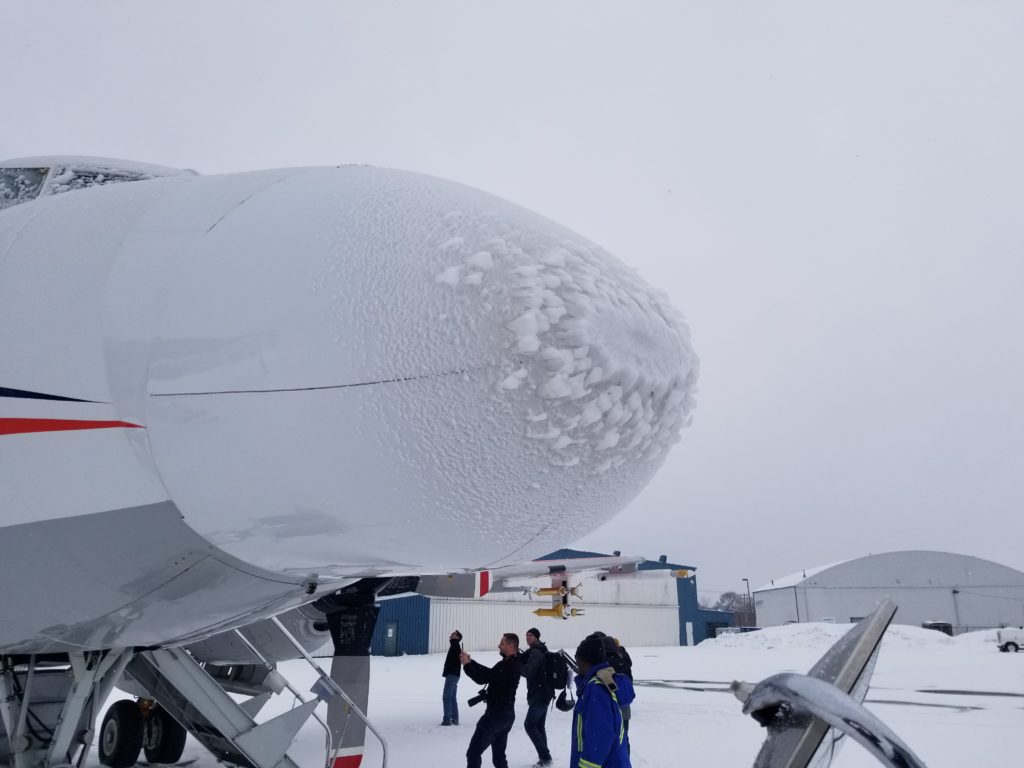
The project, which was based out of Rockford, Ill., west of Chicago, relied on ground support from various instrumented sites and real-time satellite communication to direct the aircraft into optimal cloud conditions. The flying area itself extended from Wisconsin and southern Lake Superior to Michigan, and as far south as Kentucky, but the majority of the flying was conducted adjacent to the southern half of Lake Michigan where clouds were likely to bring freezing rain and drizzle.
Among ICICLE’s many objectives, researchers hope to improve some of the forecasting models developed in recent years. Wolde noted that FAA-funded icing programs over the past decade have resulted in new tools from algorithms based on high-resolution satellite data and ground radar to help pilots detect and avoid deteriorating conditions.
Though many aircraft have sensors to indicate ice accretion and can access satellite or ground-based systems for real-time information about weather conditions on a planned flight path, “aircraft aerodynamics can be greatly deteriorated or even destroyed by a particular icing environment,” said Anthony Brown, the NRC’s research engineer test pilot.
Numerical weather model prediction improvements and ground radar system advancements could mean more accurate information.
“The primary objective of the flights was to validate those tools . . . and also improve them so you have better tools to . . . detect icing environments en route and at the terminal area,” said Wolde. “One of the eyeopeners . . . in terms of modelling of these events [is that] there were times that the models completely missed for predicting the conditions that you flew in.”
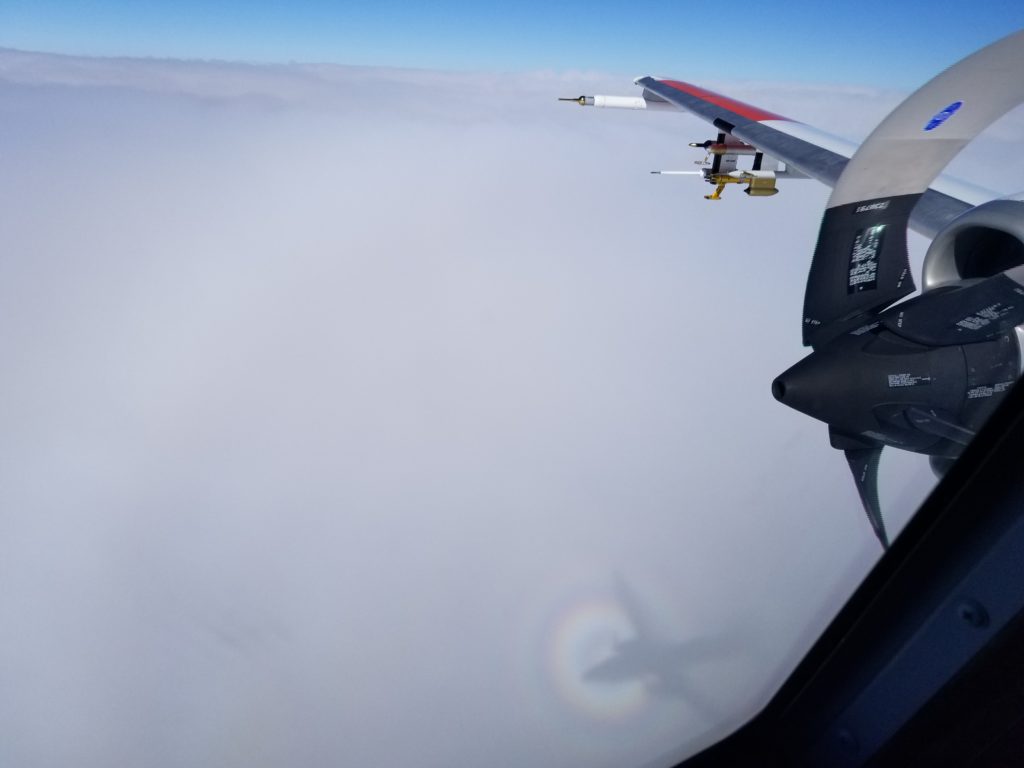
Better prediction models and a better understanding of the effects that can occur as an aircraft transitions through different icing conditions, such as large drops and drizzle, could significantly improve flight safety, he added.
“We have done that for a while with thunderstorms,” said Brown of sense and avoid prediction models. “Icing has been far more difficult.”
Knowing how quickly icing conditions are worsening would also help airfields determine when or if to close as weather systems pass overhead, he added. “The sooner that can be anticipated, the better for airplanes that [are in flight] or [those] about to take off can change their flight plans and do something else.”
Though it was not a primary part of the mission, NRC researchers also trialed new sensor technology recently developed by industry. “NRC has been working with companies to develop and validate new sensors,” said Wolde.
Flying through heavy icing isn’t for the faint of heart. Experience and the type of aircraft count for a lot, said Brown. Prior to joining the NRC in 2002, he flew in Europe and conducted flight research in Australia, often flying south of New Zealand and up to Japan under hard icing cloud environments similar to North America.
When he first saw the Convair 580, Brown admitted he had his doubts about how well it would perform. “It has got some characteristics which look good and some characteristics which don’t look so good.”
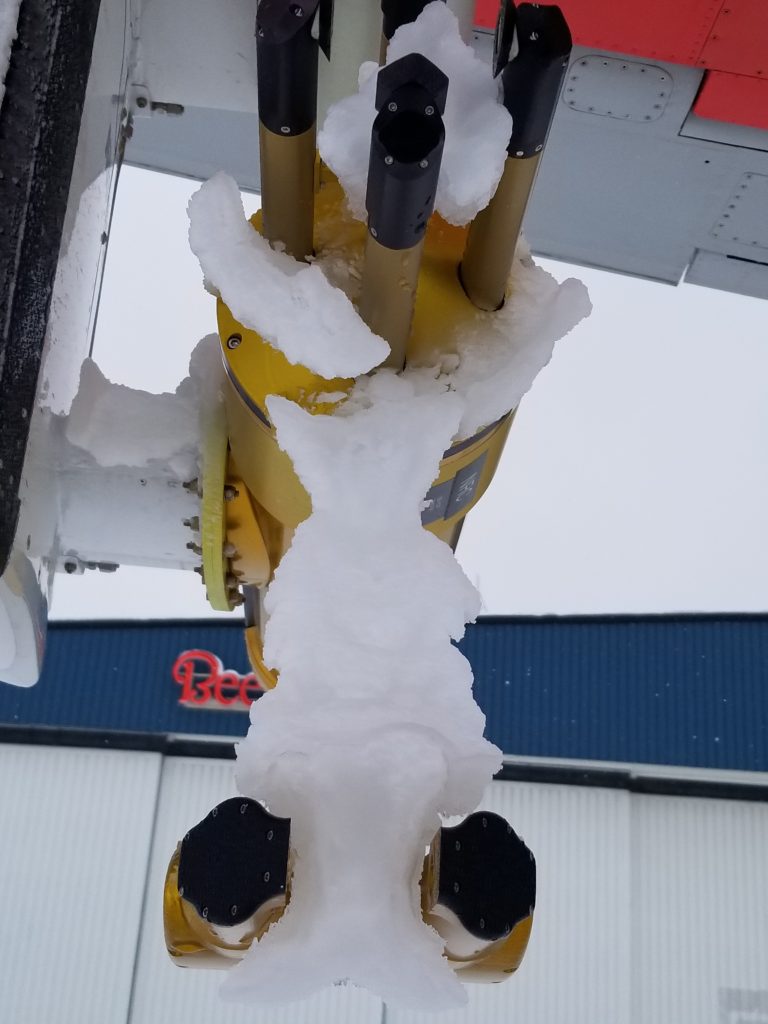
But he immediately launched into the Alliance Icing Research Studies (AIRS) II campaigns the NRC was conducting with U.S. and European agencies at the time, and discovered the design of the Convair and its ice protection system were truly unique.
“It is very rare that you have aerodynamics improved by icing,” said Brown. “In my experience, the NRC Convair is the best in-flight icing platform I have come across by far for very harsh icing environments.”
In fact, ice accumulation on the tips of some of the sensors, rather than the aircraft itself, on occasion forced the team to drop or rise to warmer air to let the sensors warm up before researchers could continue taking measurements. “The sensors sometimes cannot cope with the environment we fly in,” said Wolde.
Over the next six months, NRC and affiliated scientists will perform quality control on the data before distributing it to the wider international research community for analysis.
Wolde said changes to prediction models or aircraft certification are likely many years away, but as researchers pore over the information, “in a year or two you might get some tweaking of the models.”
“Any significant change that leads to how aircraft function operationally takes time,” he said. “My expectation is this data is going to be used for decades.”








